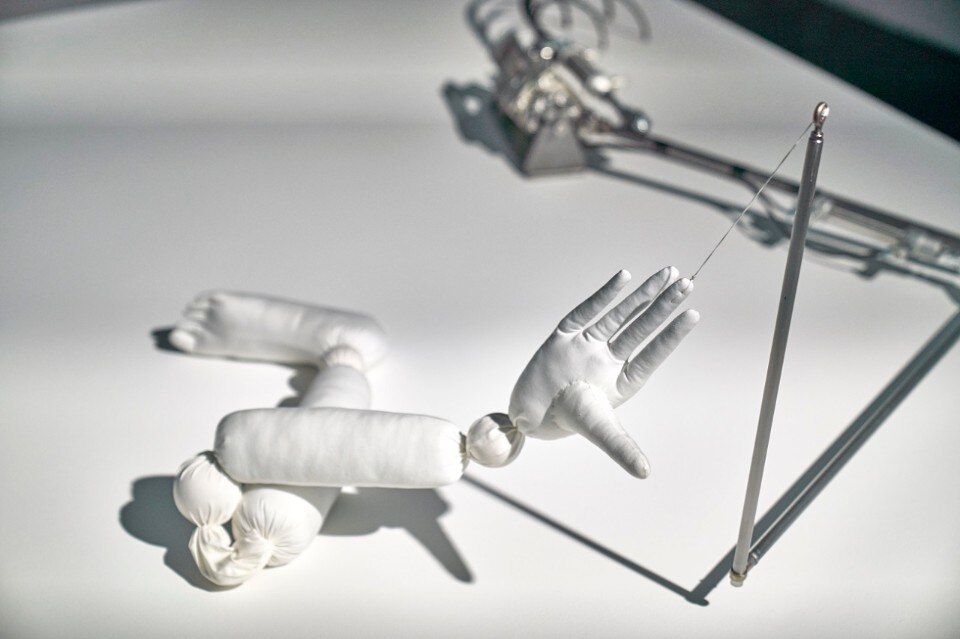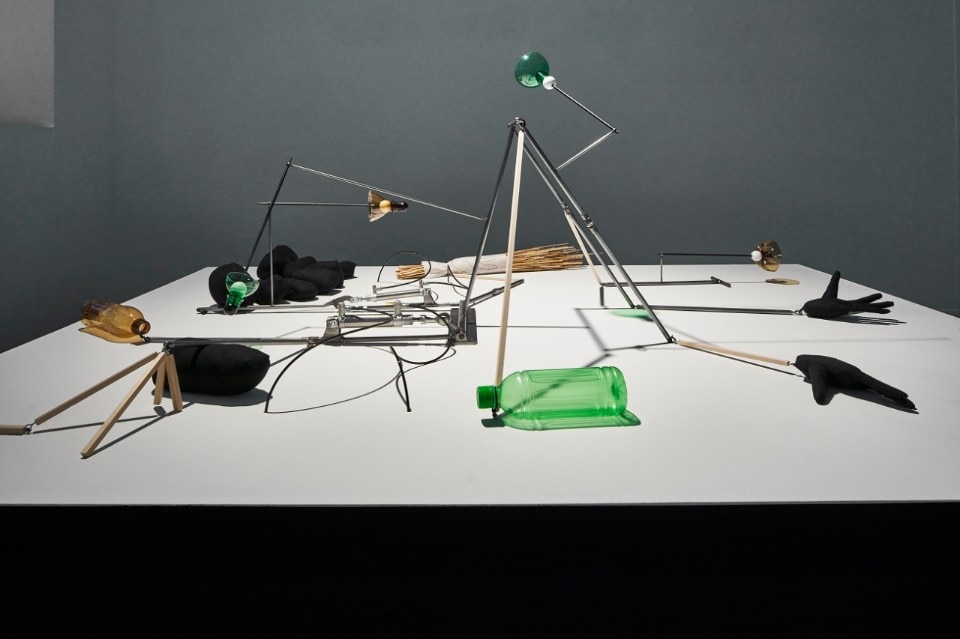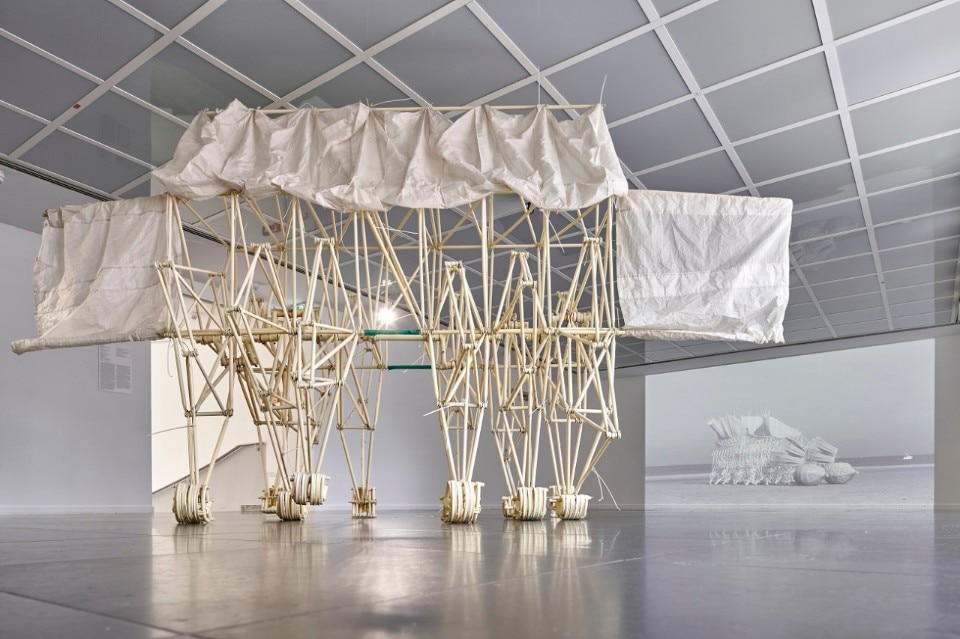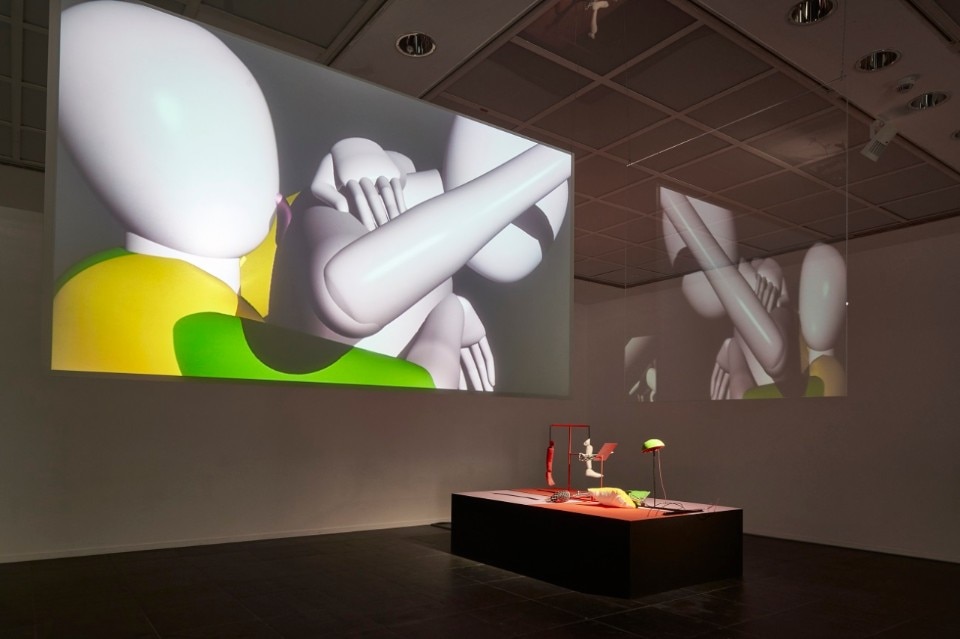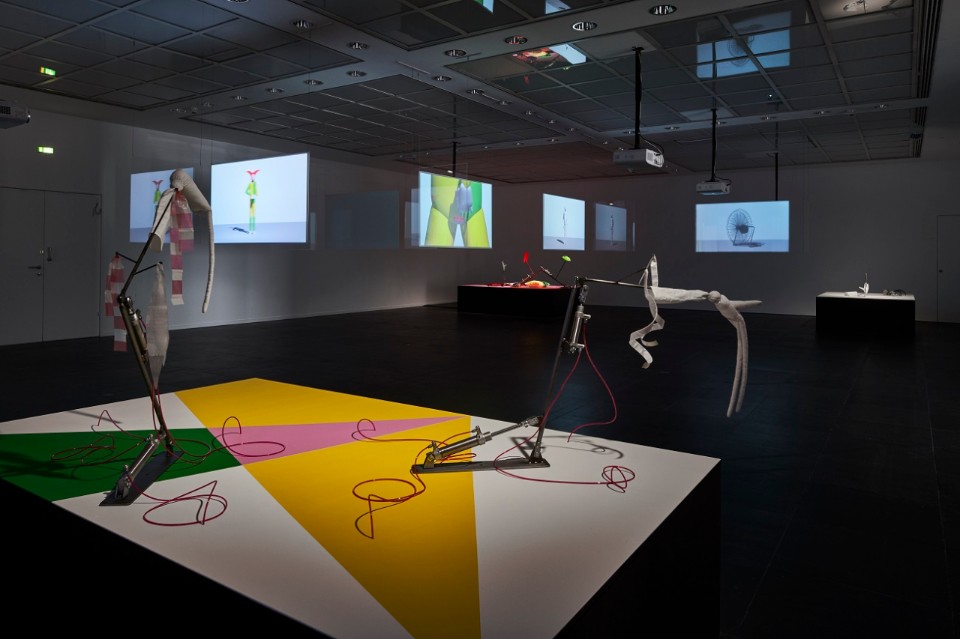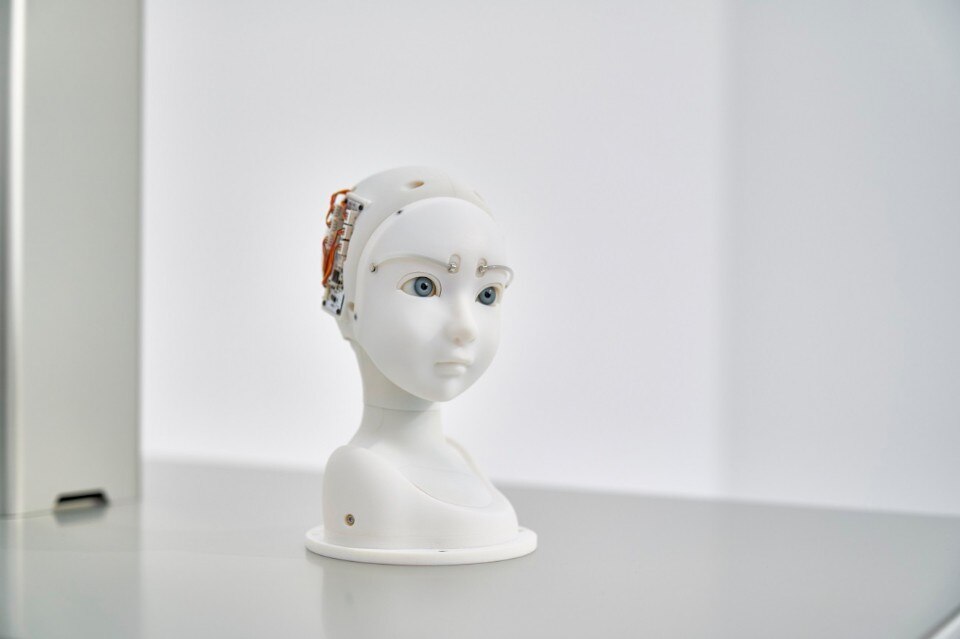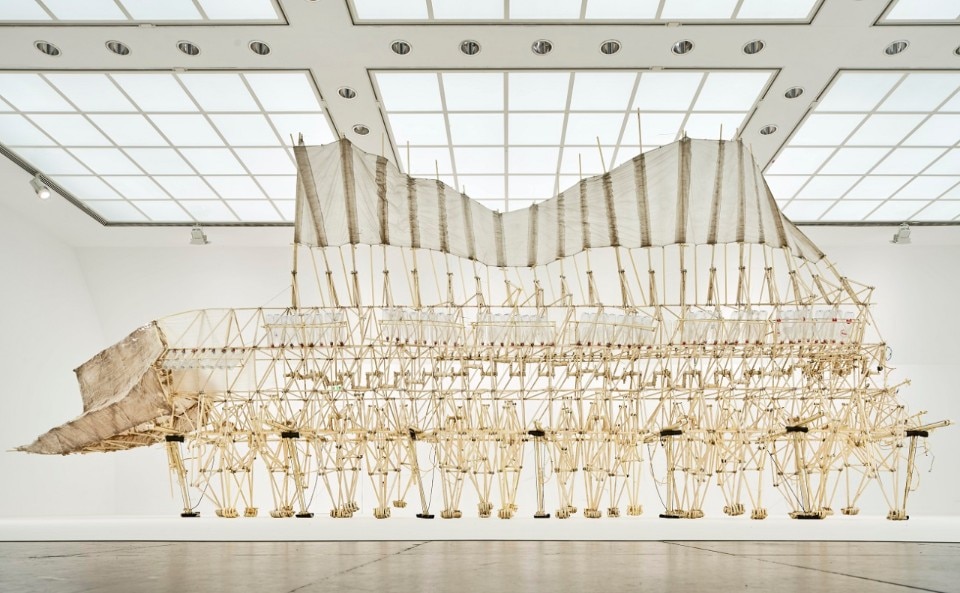In the name of the Affective Computing and under Franziska Nori’s curatorship, the German Kunstverein shows three solo shows, concerning three different artists and three different setting scales. The exhibitions span interdisciplinary fields in order seek to show and reflect the connection between contemporary art production and current social phenomena.
The Frankfurter Kunstverein was founded in 1829 and is among the oldest and largest contemporary art outposts in Germany. It could count on more than one thousand members. Since 1962, the institution has been located at the Steinernes Haus directly in the city center. The building’s extension, realized in the 1950s, has since officially been named a historical monument. With the redesign of the Dom-Römer-site, the exhibition house is centrally embedded in the structure of the new urban development.
Since the end of 2014, when Franziska Nori took on the position of director, the Frankfurter Kunstverein’s program has focused on the diverse intersections between art, science, and contemporary society. At the Frankfurter Kunstverein, art is understood as an intermediary between different fields: expert knowledge and social issues, philosophical discourses and lived realities, aesthetic experiences and the transfer of knowledge. It therefore works with artists whose practices employ knowledge spanning a variety of fields from technical and natural sciences to the humanities. Their artistic reflection of contemporary themes is intended to sharpen our view of society today and inform our vision of how it could look in the future.
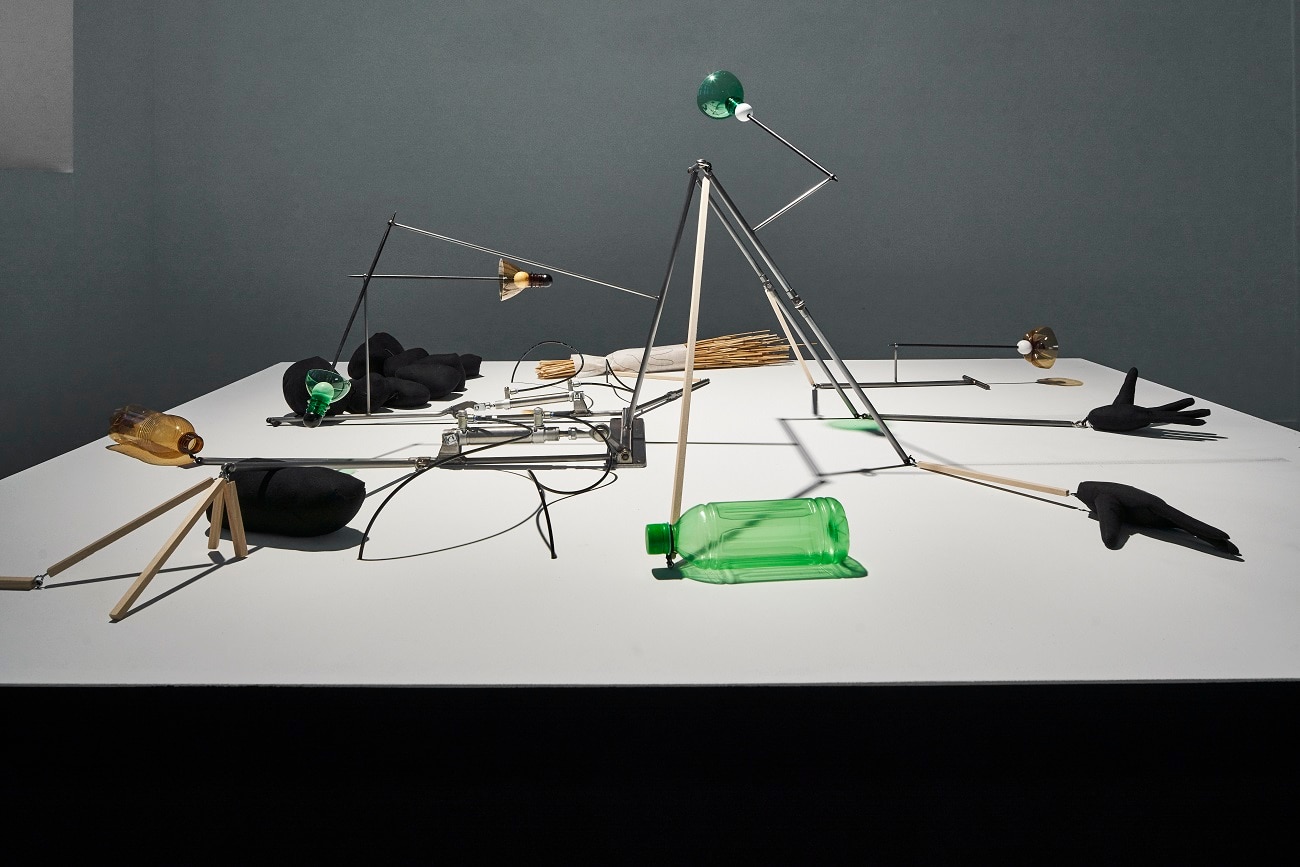
Actually, until the first week of September, visitors could get through languages, aesthetics and imaginary landscapes belonging to a cross-generational selection of three international artists: Theo Jansen (1948, Netherlands), Yves Netzhammer (1970, Switzerland) and Takayuki Todo (1985, Japan).
Synthesis, artificial identities and architectures in motion reflect on the feeling on our corporeal appearance. The three separated projects are investigating different methods of increasing the human emotional response to digital agents under the heading of Affective Computing. Research into emotions is thus gaining an increasingly central role in the research and development of artificial intelligence. Technologies are being used that examine users’ moods and their emotional reactions to content.
Systematized knowledge about feelings, emotions, sensations, as well as moods, perspectives, and intentions is already being implemented in a targeted manner. So-called online sentiment analysis is being conducted, namely algorithmic tests that classify all content according to whether it was created with a subliminal positive or negative sentiment. Each author’s content and attitudes are evaluated. Political entities and commercial enterprises benefit from in-depth knowledge about the emotional responses of an individual, who is always also a user, consumer, patient, citizen, and thus part of an overall social system.
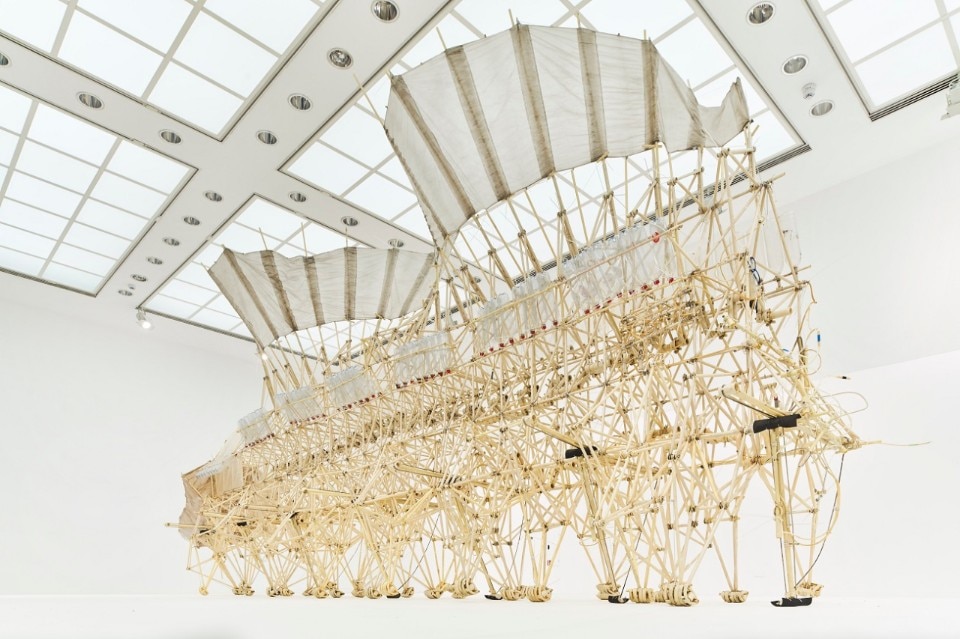
Digital assistants and systems are undergoing further development to the point their speech recognition not only understands what a human is saying, but also the emotional state they are in as they do so. Numerous industrial sectors have a great interest in recognizing emotional systems in order to use them for the development of machine learning and artificial intelligence. Functions should sound and look “more human,” thus minimizing the difference between human feeling towards technology as opposed to other humans.
For the most part, human beings can only recognize emotional signals and signs on the basis of physical characteristics. As such researchers are working to ensure that speech interfaces, talking robots, or humanoid nursing assistants, for example, are designed accordingly. Interfaces are being developed that implement knowledge about the meaning of emotional states and moods.
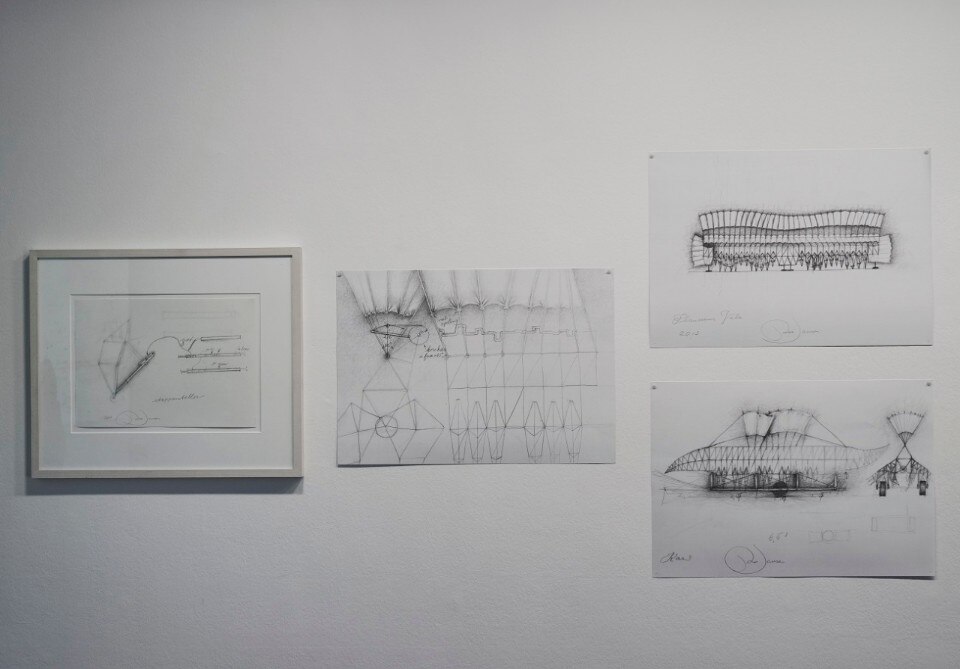
Semantically in parallel, the impressive gigantic figures by Theo Jansen span on the upper floor of the Frankfurter Kunstverein. It’s not the first time Jansen’s wind-monsters cut through museum surfaces. In Frankfurt Umerus (2009) is welcomed by the great all. Umerus is now systematically animated by compressors in order to mimicry the wind conditions and activations. In the other space Jansen is showing the sculpture Ordis which visitors can move with their own strength, offering a physical experience.
Drawings and technical sketches complete the presentation by visualizing mathematical equations that describe the workings of the machines. Jansen uses yellow plastic tubes, cable ties, and plastic bottles as raw materials in his work. Each inferior structure has a crank system with 11 tube parts. The tubes are perfectly coordinated so that the creatures’ movements glide along a horizontal line.
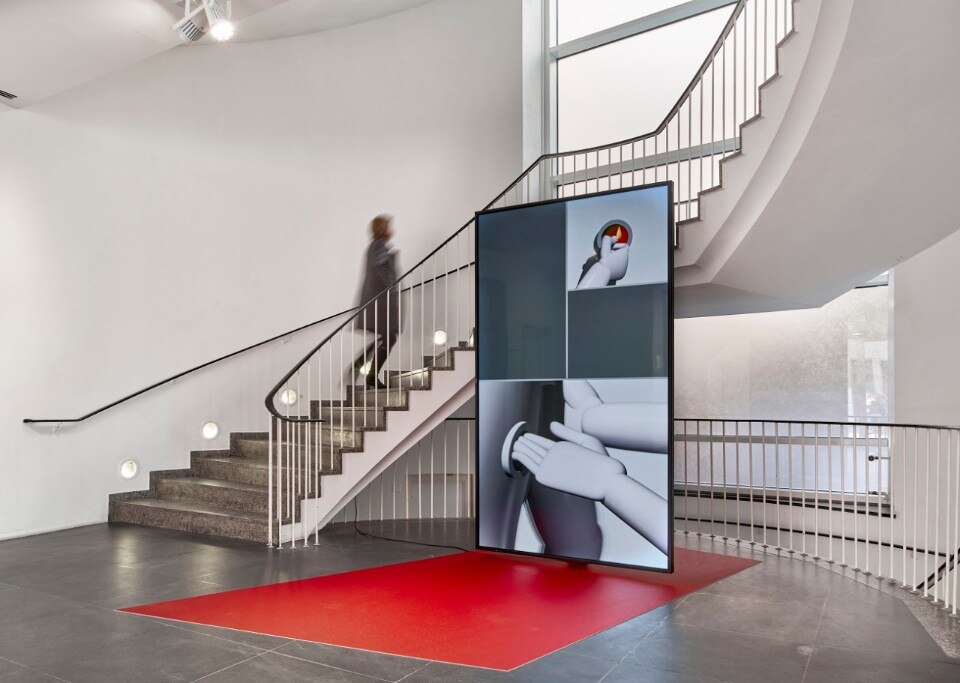
By storing wind, the kinetic structures can even move without an external energy source for a short period of time. Wings pump air into empty PET bottles that serve as the creatures’ body parts. The proportions of the tubes are pivotal for the motion sequence. The creatures’ so-called brain consists of a step counter based on a binary system that allows the sculptures to interpret and respond to their environment like primitive creatures.
Umerus system is based on a series of empty bottles filled with air. When the creature enters the water, the bottles fill up with liquid instead, changing the function of the binary system and reversing the running of the machine. This is how Umerus perceives its location in the world; it locates itself in a certain position and derives an idea of where the danger of the surrounding sea is, as well as the remaining landscape.
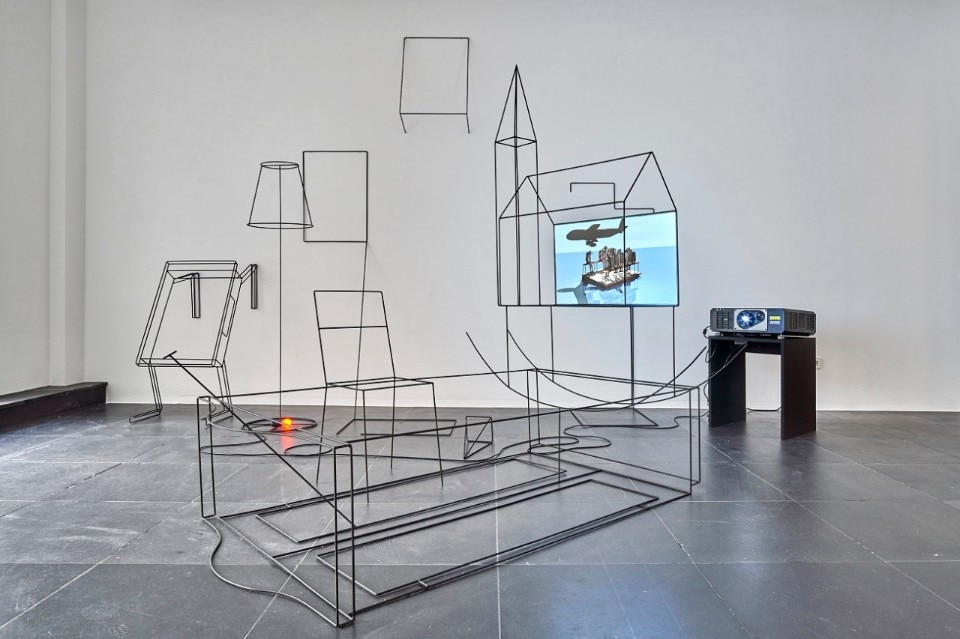
Although Jansen’s constructions are obviously lacking intellect and free will, and he clearly remains the human author, their autonomous motion processes make one forget this. Movement becomes the characteristic trait of the living. About human and humanoid life is drenched also Seer, a humanoid robotic head developed as an artistic work by Takayuki Todo. It explores the significance of gaze and facial expression in the sphere of human-machine research.
Takayuki Todo is interested in how people establish an emotional relationship with humanoid robots. As the discipline of robotics has shown for years, a realistic similarity to the human form alone is not able to break down the distance between a human and a machine. The term uncanny valley refers to this very narrow but significant gap between what a person perceives as real and credible, and what they perceive as artificial and uncanny.
Moreover, Frankfurter Kunstverein screens Netzhammer’s digitally animated films, realizing a sort of monographic parcours. Here are exhibited unique pieces that the artist has revived up for the exhibition at the museum and reworked for this specific location. Among them is one of his main works, Die Subjektivierung der Wiederholung (The Subjectivisation of Repetition). It was part of the comprehensive installation that he designed for the Swiss Pavilion at the 2007 Venice Biennale.
All of Netzhammer’s fundamental artistic features that characterize his work can be found in the fourty-two minutes piece. Here are represented intertwined, never-ending scenes that repeat themselves, change, and reappear in fragments in order to merge and form new constellations of meaning, and visually render diffuse emotions in the search for new dimensions of sensibility. Biografische Versprecher (Biographical Slips), his latest five-channel work transfers the digital imagery of computer animations into a spatial expansion. The projected images are reflected in numerous transparent surfaces and create a visual echo of their own reflections.
Netzhammer translates elements of the humanoid figures and their actions into the material world of kinetic sculptures that operate in the space. Assemblages of objects, reminiscent of puppets’ body parts, arms and legs, are moved, pulled, and pushed by mechanical constructions on the surfaces of their sculptural bases. Compressors control the drive. This results in scraping noises, jerky movements that wear out the delicate objects over time and slowly destroy them.
Those prismatic exhibitions make complex themes tangible for the viewer. In these research projects, knowledge could be physically experienced through the senses in order to provide an entry point into new perspectives, combining skills and allowing new multi-layered perspectives on projects that cross disciplines.
- Exhibitions Title:
- Theo Jansen, Yves Netzhammer, Takayuki Todo. Empathic Systems
- Opening dates:
- From June 14 to September 8, 2019
- Curated by:
- Franziska Nori
- Venue:
- Frankfurter Kunstverein
- Address:
- Steinernes Haus am Römerberg Markt 44 D - 60311 Frankfurt am Mein


